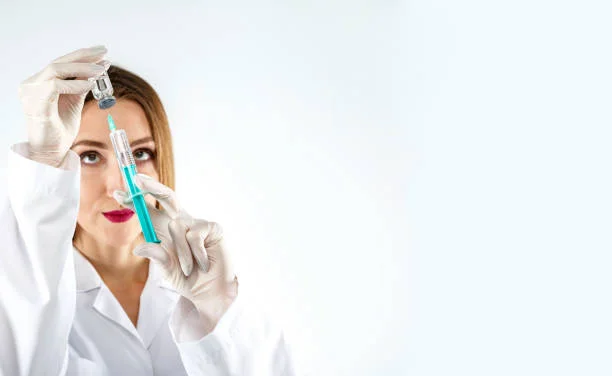The Science of Aesthetic Medicine
Aesthetic medicine is a highly evolved science today where art and science meet. Every injection, every contour, and every technique is years of research and study in medicine. What to the patient appears to be a simple cosmetic procedure is actually a calculated and exact medical practice dictated by anatomy, product science, and technical proficiency.
Seasoned injectors approach every treatment with a vision of facial balance and biologic function. They consider muscle movement, bone structure, and skin laxity before injecting. This thoughtful process ensures that the final outcome looks natural while promoting patient safety. The goal is never alteration but always restoration—restoring the skin and tissue to a state of balance and well-being.
Each filler has a different behavior according to its formulation. Hyaluronic acid products, for instance, vary in viscosity and density of cross-linking. Thicker gels form structure and volume in the cheek region, for instance, and softer versions address fine lines or more superficial locations like the tear trough area under the eyes. In-depth knowledge of these physical properties allows practitioners to insert the right product in each facial region to prevent complications and achieve reproducible outcomes.
What separates professional injectors is the way they merge technical skill with aesthetic discernment. Not only do they know where to place the needle, but why that angle or depth matters. Even a minor deviation will alter results or create unwanted effects, so precision remains the foundation of all successful treatment.
How Safety Impacts All Aspects of the Procedure
Growth in injectable treatments has put safety at the top of the medical aesthetics agenda. With growing popularity come demands for standards of training, and the law is on the side of these procedures being performed by qualified medical professionals only. The anatomy of the face is complicated, and there is not much room for error. Incorrect placement can affect vessels or nerves, and adverse effects require immediate attention.
To prevent such dangers, therapists rely on formal education and continuing education. Certification programs and anatomy laboratories provide hands-on experience where therapists practice under supervision before touching real patients. Those sessions are designed to build technical confidence along with decision-making skill. They teach how to handle unexpected responses, patient panic, and uncommon yet possible vascular occlusions.
The environment in which one is treated is also important. Clinics are subject to rigorous hygiene procedures, and the environment, materials, and equipment used are all to safety standards. Sterile syringes and single-use needles are the norm. The skin is cleaned prior to treatment to minimize the risk of infection. Aftercare advice is also an important part of safety since it allows the patient to aid the healing process as well as prevent unnecessary irritation.
Patients are encouraged to verify the qualifications of their injector. Integrity in terms of qualifications and where the product comes from is part of ethical practice. Reputable practitioners only use approved fillers and toxins, and they source these directly from approved distributors. This safeguards against counterfeit or out-of-date products, which have unfortunately been an issue with unregulated markets.
Safety-first philosophy doesn’t end with injection. Practitioners monitor outcomes in the long term, scheduling follow-up appointments to evaluate healing, symmetry, and integration of product. Revisions, if required, are carried out conservatively to maintain natural proportions.
The Need for Ongoing Training in Injection Techniques
The face is a complex structure, and it requires more than a medical degree to master the technique of injection—it requires ongoing education. Even experienced injectors attend refresher courses and workshops to learn new techniques and new technology. New filler products, improved cannula design, and an improved understanding of facial anatomy become available every year. Staying current allows practitioners to stay ahead of evolving best practices and provide safer, more precise treatments.
One of the most useful tools for working professionals is structured online learning. There are some good platforms that provide injection techniques training through video-based modules that allow practitioners to master advanced procedures at their own pace. These courses cover subjects ranging from injection depth, product choice, and complication management to new treatment protocols. For many professionals, this kind of learning is a complement to live workshops, providing a flexible way of advancing current skills or pursuing new areas of specialization.
Ongoing education also gives one confidence with challenging cases. For example, injecting the tear trough area requires knowledge of vascular pathways and variation in tissue thickness. Injecting the jawline for contouring requires knowledge of how muscle movement will affect filler distribution. Mistakes in these areas can lead to asymmetrical results or product migration and therefore precise training is still mandatory.
A second benefit of continuing education is exposure to multispecialty expertise. Most advanced-level courses bring together dermatologists, plastic surgeons, and aesthetic nurses to present techniques. Cross-specialty interaction standardizes safety protocols and encourages shared information that raises the level of the entire profession.
Patients reap the benefits of this culture of continuous learning indirectly. As injectors learn continuously, they refine both technique and communication. They are more capable of describing options, setting realistic expectations, and customizing care to specific anatomy. Such professional growth positively serves to augment the patient-practitioner trust relationship—a foundation of any medical procedure that changes appearance.
The Future of Professional Aesthetic Injections
The foregoing is the answer:
The era of precision and customization is what the world of aesthetic injectables is entering. Scientific advancement continues both in material and technique. Hyaluronic acid fillers now come in specialized versions for specific facial layers. Some have lidocaine incorporated for pain management, while others use cross-linking technologies that allow smoother incorporation with adjacent tissue.
Injectables’ future are also being designed with the help of data. Computer software featuring digital facial mapping and 3D imaging are starting to aid injectors with pre-treatment visualization of muscle dynamics and bone structure. The technology minimizes the element of guesswork and allows the placement of minimal quantities of filler more precisely. Paired with artificial intelligence software that analyzes patient photos, practitioners will have futuristic tools in the near future to design treatments more accurately than ever before.
Safety trials are also ongoing. Long-term studies of filler behavior are making doctors understand how products degrade and interact with tissue over time. Such information optimizes maintenance regimens and reduces the occurrence of complications from overfilling or overlapping products.
Ethical standards also evolve. There is more focus on patient education and realistic outcomes. Clinics today are more focused on proportionate outcomes rather than aggressive volume restoration. This evolution reflects a maturing industry more concerned with health and proportion rather than trend-driven aesthetics.
As are the treatments more advanced, so will be the role of the practitioner. The most highly regarded injectors will no longer be those that simply perform techniques but rather those that wed science, ethics, and art. Their ability to assess each patient in their entirety—lifestyle, aging process, and personal goals—will determine the future of medical aesthetics.
The demand for non-surgical rejuvenation continues to increase, and with it is an even greater responsibility to maintain quality and trust. Injectors who invest in continuing education and who are bound by medical ethics will lead this revolution, making aesthetic medicine remain safe as well as cutting-edge for years to come.






